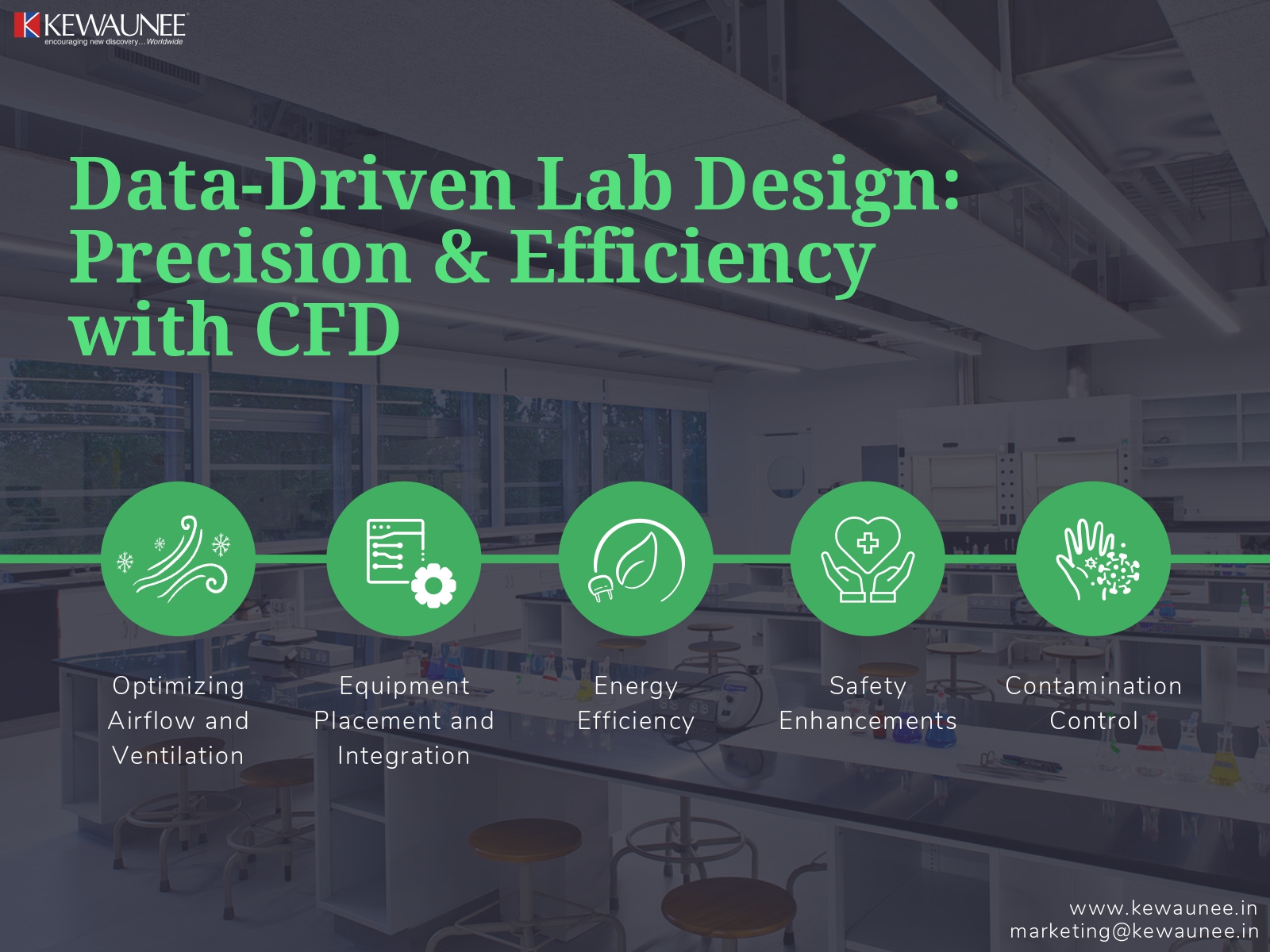Data-Driven Lab Design: Precision & Efficiency with CFD
In the ever-evolving world of scientific research and development, laboratories play a crucial role in conducting experiments, analyzing data, and making groundbreaking discoveries. To ensure optimal results, researchers are constantly seeking ways to improve the design and functionality of these laboratories.
One such approach that has gained significant traction in recent years is data-driven lab design, which utilizes Computational Fluid Dynamics (CFD) to optimize lab layouts and ensure precision and efficiency.
In this blog, we will explore the significance of data-driven lab design and how CFD is revolutionizing the way labs are planned and operated.
The Importance of Lab Design
Efficient lab design is more than just an aesthetic consideration; it directly impacts research outcomes. A poorly designed lab can lead to inaccuracies in experiments, inconsistent results, and even safety hazards.
Traditionally, lab design was based on rules of thumb and generalized guidelines, but this approach often fell short in meeting the specific requirements of each research project.
The Rise of Data-Driven Lab Design
Data-driven lab design represents a paradigm shift, using empirical data and advanced simulation techniques to optimize lab layouts.
By employing data analytics, researchers gain valuable insights into the flow of air and fluids within the lab space, enabling them to make informed decisions regarding equipment placement, ventilation, and containment systems.
Understanding Computational Fluid Dynamics (CFD)
At the heart of data-driven lab design is Computational Fluid Dynamics (CFD). CFD is a numerical simulation technique used to analyze the behavior of fluids (liquids and gases) within a given space.
CFD allows researchers to study the distribution of temperature, pressure, and flow patterns, offering a comprehensive understanding of how air, chemicals, and contaminants disperse throughout the lab.
Benefits of CFD in Lab Design
- Optimizing Airflow and Ventilation: CFD simulations can model the movement of air and help design an efficient ventilation system. This ensures that potential contaminants are swiftly removed from the lab space, maintaining a safe and healthy environment for researchers.
- Equipment Placement and Integration: CFD can assess the impact of various lab equipment configurations on airflow patterns. Researchers can determine the best location for fume hoods, biosafety cabinets, and other lab apparatus to minimize interference and ensure accurate results.
- Energy Efficiency: CFD enables researchers to optimize heating, ventilation, and air conditioning (HVAC) systems, reducing energy consumption and operating costs without compromising safety and comfort.
- Safety Enhancements: With CFD, researchers can identify potential safety hazards, such as chemical leaks or gas build-ups, and implement safety measures to mitigate risks.
- Contamination Control: For labs dealing with sensitive experiments, CFD can help design cleanroom environments that maintain precise control over particulate contamination and environmental conditions.
The Data-Driven Lab Design Process
The implementation of data-driven lab design involves several key steps:
- Data Collection: Gathering relevant data about the lab space, equipment, and environmental conditions is the first crucial step. This includes lab dimensions, airflow rates, temperature profiles, and the properties of fluids used.
- Model Creation: Researchers create a 3D model of the lab space, including all the equipment, ventilation systems, and other elements that influence airflow.
- Simulation and Analysis: Using CFD software, the model is subjected to simulations that analyze fluid behavior under different conditions. Researchers can explore various scenarios to identify the most efficient and safe lab design.
- Optimization: Based on the simulation results, researchers can optimize the lab design by adjusting equipment placement, airflow patterns, and ventilation settings.
Conclusion
Data-driven lab design is revolutionizing the way laboratories are planned, leading to precision, efficiency, and safety in scientific research. Computational Fluid Dynamics (CFD) plays a pivotal role in this process, allowing researchers to visualize and understand the complex dynamics of fluids and air within the lab space.
By harnessing the power of CFD, scientists and engineers can optimize lab layouts, create safer environments, and enhance the accuracy of experiments, ultimately driving innovation and discovery across various scientific fields.
As technology continues to advance, data-driven lab design and CFD are poised to become integral components of the modern research landscape. Embracing these methodologies will undoubtedly unlock new possibilities and accelerate progress in the pursuit of knowledge.
Comments are closed.











